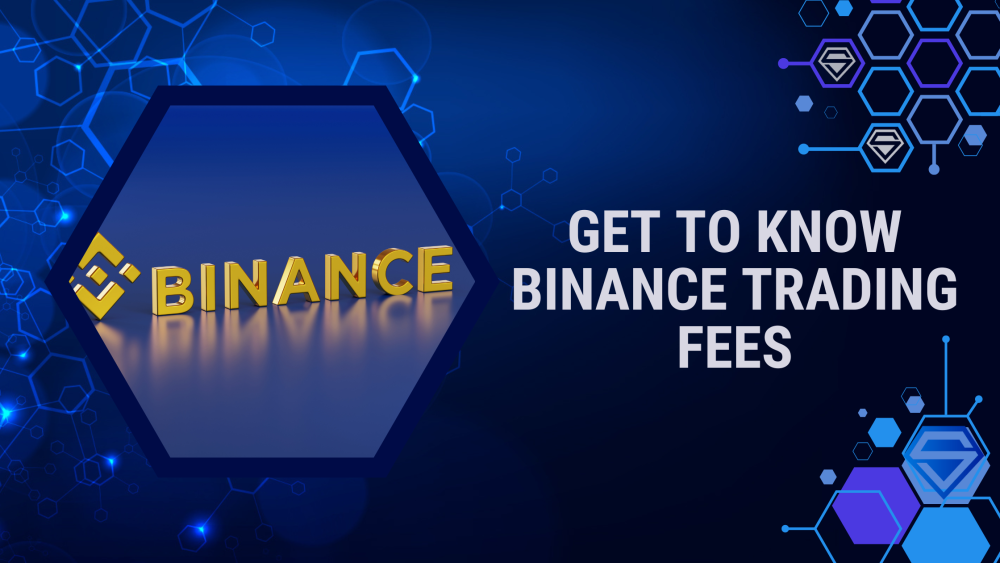
16. February, 2024
A Comprehensive Guide to Binance Trading Fees: Understanding the Costs
So, you’ve heard about crypto trading and want to give it a shot? Awesome! But before you read through, let’s talk about something super important: their fees.
Binance, a big-time player in the crypto world, offers lots of different trades and cool features. Here’s the lowdown: you’ll pay fees when you trade on Binance. But don’t sweat it! These fees are different for everyone. They change based on things like how much you’re trading and whether you’re setting the price or going along with it.
In this blog, we give you a comprehensive guide to Binance Trading Fees. Understanding how fees work on Binance and using their tools wisely can help you explore crypto like a pro and improve your chances of success.
Ready to get started? Make sure to read this blog all the way through!
Binance US Trading Fees
Now, in crypto trading, there are two types of traders: makers and takers. Makers set their own prices, while takers just accept those prices. Now, here’s the important part: Binance treats them differently when it comes to fees.
And guess what? The more you trade, the lower your fees become. if you’ve got some Binance Coin (BNB), you can get discounts on those fees
Binance.US stands out as a major U.S. exchange offering free Bitcoin trading on specific pairs, with 0% fees on Tier 0 pairs and some of the lowest fees in the industry on others. Your trading fees depend on your activity over the past 30 days, calculated daily at 8 p.m. EDT, excluding self-trading and Tier 0 pairs. Plus, you can enjoy a 5% discount on Advanced Trading fees when you pay with BNB.
Keep in mind that Binance.US deducts a 20% to 35% service fee from earned staking rewards, with standard fees ranging from 20% for ETH to up to 35% for other assets.
You might have to pay fees when you trade cryptocurrencies or use certain services. Before you finalize your transaction, these fees are shown to you so you know how much you’ll be charged. The amount of fees can change depending on factors like the type of cryptocurrency, the transaction you’re making, and the current market conditions.
Binance.US also adds a spread to the prices you see during transactions to make sure you get a fair deal. While depositing cryptocurrencies is free, withdrawing them might come with fees. And if you’re dealing with U.S. dollars, there could be fees depending on how you’re paying.
Always double-check the fees shown to you before you confirm your transaction, as they can vary based on factors like the cryptocurrency, payment method, and network conditions.
How are Trading Fees Calculated
Trading fees are calculated based on the asset you receive.
So, if you buy ETH/USDT, you pay the fee in ETH; if you sell ETH/USDT, you pay the fee in USDT.
For example, if you buy 10 ETH at a price of 3,452.55 USDT each, the trading fee would be 0.01 ETH.
Likewise, if you sell 10 ETH at the same price, the trading fee would be 34.5255 USDT.
Trading Categories and Fees in Binance
Binance offers different ways to trade cryptocurrencies and services to help beginners get started.
Spot Trading
Spot trading is the simplest way to trade cryptocurrencies, where you buy and sell digital currencies at their current market price. It’s perfect for beginners because it’s easy to understand and doesn’t require any special knowledge. You can easily add funds to your wallet, choose the cryptocurrency you want to trade, and make your move without needing to be an expert.
The spot price is the current market price for buying or selling something right away, like a cryptocurrency. Your trading fee for spot trading depends on how much you’ve traded in the last 30 days.
It’s really important to know how much you’ll be charged for trading. You can use a Binance fee calculator to see your trading fee, but it’s also helpful to know how to do it yourself. To pay even less for your transactions, you can use referral codes to get a 20% discount when you sign up.
Plus, if you keep Binance Coin (BNB) in your wallet, you can use it to pay your fees and get a 25% discount.
Futures Trading
Futures trading is when you agree to buy or sell a cryptocurrency at a set price on a future date. People do this to protect themselves from risks or to try to predict where prices will go.
Futures trading fees on Binance are similar to those in regular trading, but they’re usually cheaper. However, because of the leverage used, you need five times more trading volume to reach a VIP status compared to regular trading. Binance offers both USDT and coin-marginated futures, each with its own fee structure.
If you use referral codes when signing up for your Binance Futures account, you’ll get a 10% discount on fees.
Even if you already have a Binance Futures account, you can still enjoy this 10% discount by transferring some BNB to your USDT-M futures wallet to pay fees in BNB. This discount applies only to fees in USDT-margined futures markets and not to coin-margined contracts.
By using a referral code and paying fees in BNB, you can save about 20% (10% from the referral code + 10% from paying in BNB) on your trading costs.
Margin Trading
Margin trading is when you trade assets using money from someone else. This lets traders use more money than they have to make bigger trades. It can make trading outcomes stronger, meaning you can make bigger profits on successful trades but also face bigger losses if the market goes against you.
With Binance margin trading, fees are charged hourly. This means that even if you borrow coins for a short time, like less than an hour, you’ll still have to pay interest.
Conclusion
Binance keeps its trading fees clear and fair for users. Whether you’re trading in the spot market, margin trading, or futures, Binance provides tools to help you understand and manage your fees.
By using features like referral codes and paying fees in BNB, you can even save more money on your trades. So, with Binance, you can trade confidently, knowing you’re getting a good deal.


